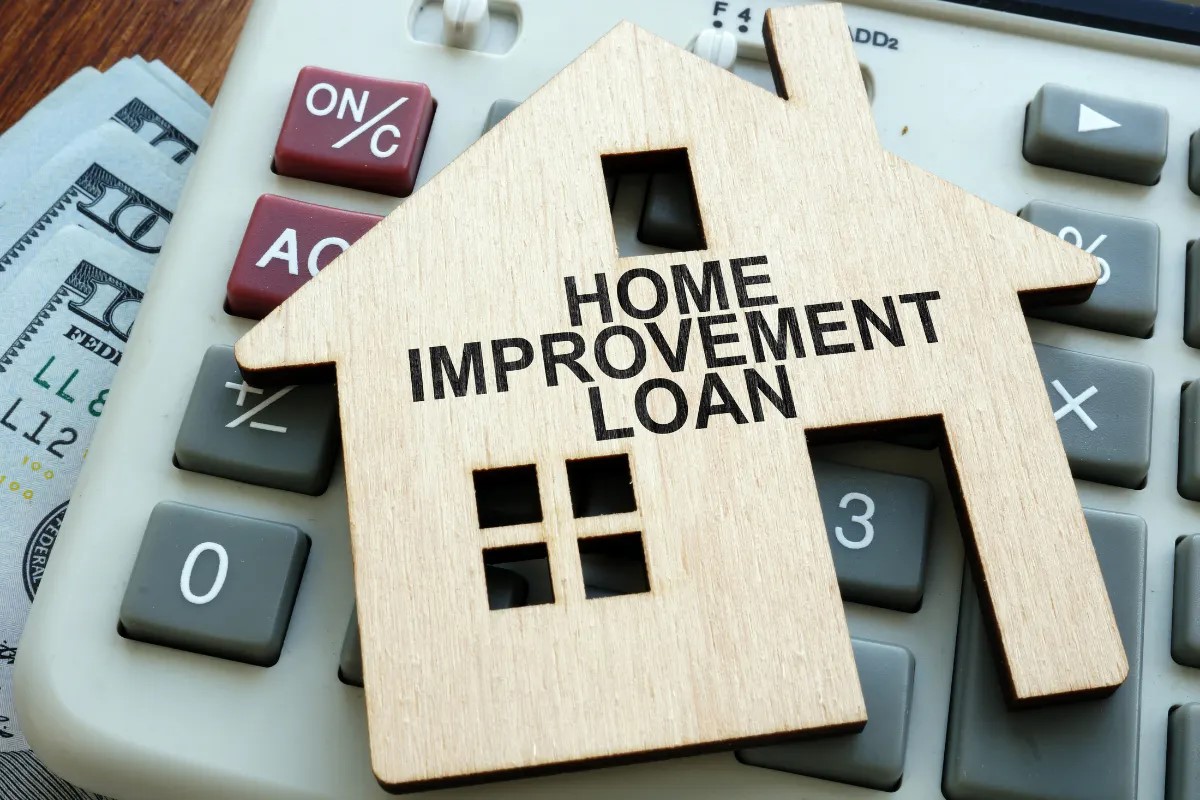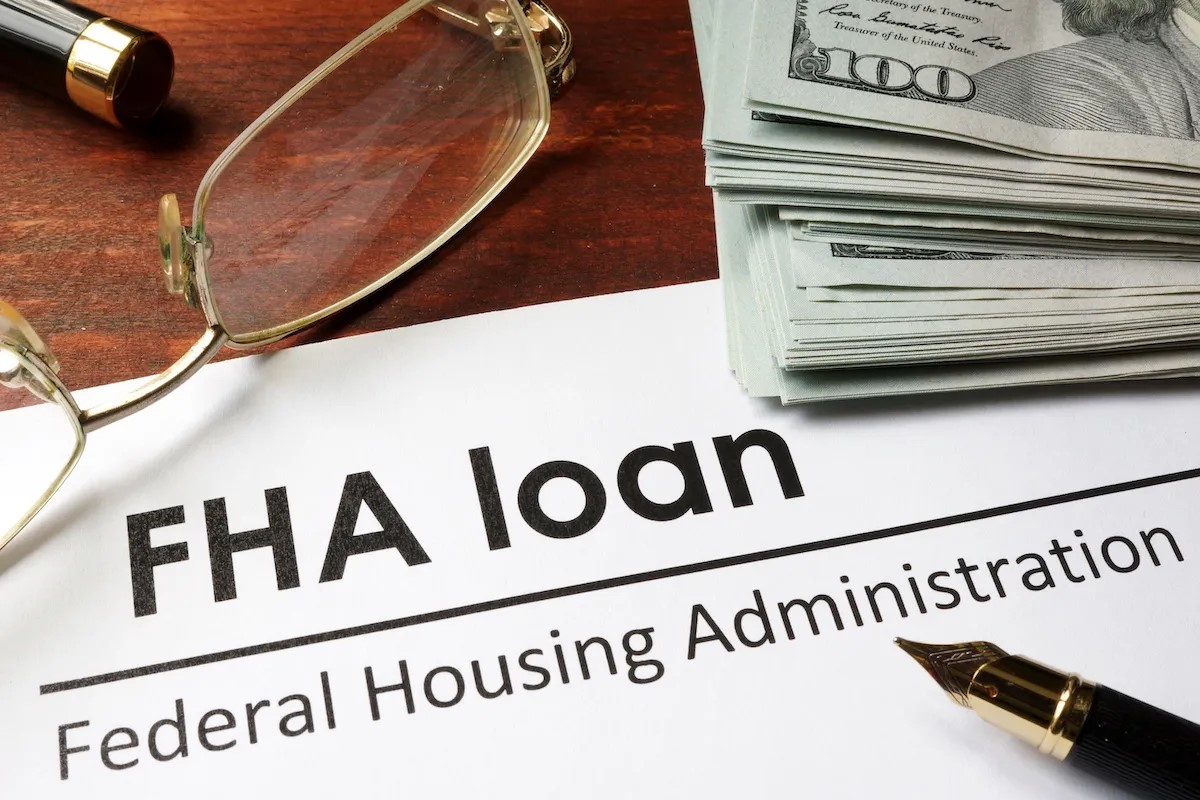Home>Renovation & DIY>Home Renovation Guides>How To Get A Loan To Do Home Improvements?


Home Renovation Guides
How To Get A Loan To Do Home Improvements?
Modified: January 9, 2024
Looking for a loan to fund your home renovation project? Discover expert guides and tips for securing the right financing for your home improvements.
(Many of the links in this article redirect to a specific reviewed product. Your purchase of these products through affiliate links helps to generate commission for Storables.com, at no extra cost. Learn more)
Introduction
Are you considering making significant upgrades to your home, such as renovating your kitchen, adding a new bathroom, or enhancing your outdoor living space? Undertaking these projects can significantly increase the comfort, functionality, and value of your home. However, such endeavors often require a substantial financial investment. This is where home improvement loans come into play.
Whether you're a homeowner looking to make necessary repairs or hoping to embark on a major remodeling project, understanding the various options for securing a home improvement loan is crucial. These financial tools can provide the necessary funds to turn your renovation dreams into reality.
In this comprehensive guide, we will delve into the world of home improvement loans, exploring the different types available, the qualifications necessary to secure them, and the process of selecting the right lender. Additionally, we will discuss the steps involved in applying for and managing a home improvement loan. By the end of this journey, you will be equipped with the knowledge needed to confidently pursue a home improvement loan and breathe new life into your living space. So, let's embark on this enlightening exploration of home improvement loans and pave the way for a home that truly reflects your vision and style.
Key Takeaways:
- Home improvement loans provide accessible financing for renovation projects, offering options like home equity loans and personal loans to enhance your living space without draining your savings.
- Securing a home improvement loan involves evaluating qualifications, choosing the right lender, and managing funds responsibly to bring your renovation vision to life while maintaining financial stability.
Read more: Where To Get A Home Improvement Loan
Understanding Home Improvement Loans
Home improvement loans are financial products designed to provide homeowners with the funds necessary to make renovations, repairs, or additions to their properties. These loans offer an accessible and flexible means of financing home improvement projects, empowering homeowners to enhance their living spaces without depleting their savings or disrupting their financial stability.
Unlike other types of loans, such as mortgages or personal loans, home improvement loans are specifically tailored to address the unique needs of homeowners seeking to upgrade their properties. They often come with favorable terms and interest rates, making them an attractive option for those looking to invest in their homes.
One of the key advantages of home improvement loans is their versatility. Whether you’re planning to revamp your interior, expand your living space, or undertake essential repairs, these loans can accommodate a wide range of projects. From minor cosmetic updates to major structural renovations, home improvement loans can be tailored to suit the scope and scale of your specific undertaking.
Moreover, home improvement loans provide homeowners with the opportunity to increase the value of their properties. By investing in strategic upgrades and modernizations, homeowners can potentially boost the resale value of their homes, making these loans a financially savvy choice in the long run.
Understanding the nuances of home improvement loans is essential for homeowners seeking to embark on renovation projects. By familiarizing yourself with the intricacies of these financial tools, you can make informed decisions and navigate the process of securing and managing a home improvement loan with confidence and ease.
Types of Home Improvement Loans
When it comes to financing home improvement projects, homeowners have several options to consider. Understanding the various types of home improvement loans is crucial for selecting the most suitable financing solution for your specific needs. Here are some of the common types of home improvement loans:
- Home Equity Loan: Also known as a second mortgage, a home equity loan allows homeowners to borrow against the equity in their homes. This type of loan typically offers a fixed interest rate and a lump sum payment, making it ideal for large, one-time expenses such as major renovations or additions.
- Home Equity Line of Credit (HELOC): Similar to a home equity loan, a HELOC also allows homeowners to borrow against their home’s equity. However, a HELOC functions more like a credit card, providing a revolving line of credit that can be accessed as needed. This makes it a flexible option for ongoing or phased home improvement projects.
- Personal Loan: A personal loan can be used for various purposes, including home improvements. These unsecured loans do not require collateral, and the approval process is typically faster than that of home equity loans. However, they may come with higher interest rates, especially for borrowers with average or poor credit.
- Government-Backed Loans: Programs such as the Federal Housing Administration (FHA) Title I Property Improvement Loan and the Department of Veterans Affairs (VA) Cash-Out Refinance Loan offer government-backed options for home improvements, often with favorable terms and lower credit score requirements.
- Refinance: Homeowners can consider refinancing their existing mortgage to access funds for home improvements. Cash-out refinancing allows borrowers to replace their current mortgage with a new one, borrowing more than they owe on their current loan and receiving the difference in cash.
Each type of home improvement loan has its own advantages and considerations. By evaluating your specific renovation needs, financial situation, and long-term goals, you can determine which type of loan aligns best with your requirements. Additionally, it’s important to compare interest rates, repayment terms, and potential fees associated with each loan type to make an informed decision.
Now that we’ve explored the various types of home improvement loans, let’s delve into the qualifications necessary to secure these loans and the process of choosing the right lender.
How to Qualify for a Home Improvement Loan
Securing a home improvement loan involves meeting certain qualifications to demonstrate your ability to repay the borrowed funds. While the specific requirements may vary depending on the type of loan and the lender, there are several key factors that commonly influence eligibility for home improvement loans:
- Credit Score: Lenders typically consider the applicant’s credit score to assess their creditworthiness. A higher credit score often translates to better loan terms and lower interest rates. While each lender may have different credit score requirements, maintaining a good credit score can improve your chances of qualifying for a favorable home improvement loan.
- Income and Employment: Providing proof of a stable income and steady employment history is essential for demonstrating your ability to repay the loan. Lenders may request recent pay stubs, tax returns, or other financial documents to verify your income and employment status.
- Equity: For home equity loans and HELOCs, the amount of equity you have in your home is a critical factor. Lenders may require a minimum level of equity to qualify for these loans, as it serves as collateral and mitigates the lender’s risk.
- Debt-to-Income Ratio: Lenders assess your debt-to-income ratio to evaluate your capacity to take on additional debt. Maintaining a healthy balance between your existing debt and income can bolster your eligibility for a home improvement loan.
- Property Appraisal: When using your home as collateral for a loan, lenders may require a professional appraisal to determine the property’s current value. This appraisal helps establish the maximum loan amount based on the equity in your home.
It’s important to note that the specific qualifications and documentation required for a home improvement loan can vary widely among lenders and loan types. Some lenders may be more flexible in certain areas, such as credit score requirements, while others may place greater emphasis on factors like equity and property value.
Before applying for a home improvement loan, it’s advisable to review your credit report, gather the necessary financial documents, and assess your current financial standing. This proactive approach can help you identify any potential obstacles and take steps to strengthen your qualifications before seeking a loan.
By understanding the key qualifications for home improvement loans and taking proactive measures to meet these requirements, you can position yourself for a successful loan application. In the next section, we’ll explore the process of choosing the right lender to fulfill your home improvement financing needs.
Shop around for different loan options, such as home equity loans or personal loans, to find the best interest rates and terms for your home improvement project.
Choosing the Right Lender
When seeking a home improvement loan, selecting the right lender is a crucial decision that can significantly impact your borrowing experience and the overall success of your renovation project. With numerous lenders offering a variety of loan products, it’s essential to consider several factors to ensure that you choose a lender that aligns with your specific needs and financial goals.
Here are some key considerations to keep in mind when evaluating potential lenders for your home improvement loan:
- Loan Options: Research the types of home improvement loans offered by each lender. Compare the terms, interest rates, and repayment options to determine which lender provides the most suitable loan products for your renovation project.
- Reputation and Reliability: Look for lenders with a strong reputation for reliability, transparency, and excellent customer service. Reading customer reviews and seeking recommendations from trusted sources can provide valuable insights into a lender’s track record.
- Interest Rates and Fees: Compare the interest rates and fees associated with home improvement loans from different lenders. Pay close attention to the annual percentage rate (APR) to understand the total cost of borrowing and ensure that you’re comfortable with the proposed terms.
- Customer Support: Assess the level of customer support provided by each lender. A responsive and knowledgeable support team can offer guidance throughout the loan application process and provide assistance if you encounter any issues during the repayment period.
- Flexibility and Customization: Consider whether the lender offers flexible repayment options and the ability to customize the loan terms to suit your specific needs. A lender that accommodates your unique circumstances can make the borrowing experience more tailored and manageable.
- Prequalification Process: Inquire about the prequalification process for home improvement loans. Some lenders offer prequalification, which allows you to estimate the loan amount, interest rate, and terms you may qualify for without impacting your credit score.
By carefully evaluating these factors and conducting thorough research, you can identify a lender that not only meets your financial requirements but also provides a positive and supportive lending experience. Additionally, don’t hesitate to reach out to potential lenders with any questions or concerns to gain a clearer understanding of their offerings and assess their responsiveness.
Once you’ve chosen a lender that aligns with your needs, you can proceed with the loan application process, confident in your decision to partner with a reputable and reliable financial institution. In the subsequent section, we’ll delve into the steps involved in applying for a home improvement loan, guiding you through the process with clarity and insight.
Applying for a Home Improvement Loan
Embarking on the journey to secure a home improvement loan involves a series of steps aimed at facilitating a seamless and successful borrowing experience. By understanding the application process and preparing the necessary documentation, you can navigate the loan application with confidence and efficiency.
Here’s a comprehensive overview of the steps involved in applying for a home improvement loan:
- Evaluate Your Financing Needs: Begin by assessing the scope and cost of your home improvement project. Determine the amount of funding required to execute your renovation plans effectively.
- Research Loan Options: Explore the various types of home improvement loans available and compare the terms, interest rates, and eligibility requirements offered by different lenders. Select the loan product that best aligns with your financial goals and renovation needs.
- Gather Financial Documents: Prepare the necessary financial documentation, including recent pay stubs, tax returns, bank statements, and any additional information requested by the lender. Organizing these documents in advance can streamline the application process.
- Submit the Loan Application: Complete the loan application provided by your chosen lender. Ensure that the information you provide is accurate and comprehensive, reflecting your financial standing and the purpose of the loan.
- Undergo the Approval Process: After submitting your application, the lender will review your financial information, credit history, and the details of your home improvement project. This evaluation determines your eligibility and the terms of the loan.
- Provide Collateral or Appraisal: If you’re applying for a home equity loan or HELOC, the lender may require a property appraisal or information about the collateral you’re offering to secure the loan.
- Review and Sign the Loan Agreement: Upon approval, carefully review the terms and conditions of the loan agreement provided by the lender. Once you’re satisfied with the terms, sign the agreement to formalize the borrowing arrangement.
- Receive and Utilize the Funds: After signing the loan agreement, the lender will disburse the approved funds. You can then use the funds to initiate and complete your home improvement project as planned.
Throughout the application process, maintaining open communication with the lender and promptly addressing any requests for additional information can expedite the approval and funding timeline. Additionally, staying informed about the progress of your application and seeking clarification on any aspects of the loan process can help ensure a smooth and transparent experience.
With a clear understanding of the steps involved in applying for a home improvement loan, you can approach the process with confidence and diligence, paving the way for a successful financing journey. In the following section, we’ll explore the essential aspects of managing your home improvement loan to ensure responsible and effective utilization of the borrowed funds.
Managing Your Home Improvement Loan
Once you’ve successfully secured a home improvement loan and initiated your renovation project, effective management of the borrowed funds becomes paramount. Responsible loan management not only ensures the timely completion of your home improvements but also contributes to a positive borrowing experience and financial well-being. Here are essential strategies for managing your home improvement loan:
- Establish a Detailed Budget: Create a comprehensive budget outlining the costs associated with your home improvement project. Allocate funds for materials, labor, permits, and any potential contingencies to prevent overspending.
- Track Expenses and Progress: Keep meticulous records of all project-related expenses and monitor the progress of the renovations. This proactive approach allows you to stay within budget and address any deviations promptly.
- Communicate with Contractors: Maintain open communication with your contractors and service providers to ensure that the project stays on track and within the established budget. Address any concerns or modifications to the original plan promptly.
- Adhere to Loan Repayment Schedule: Make timely payments according to the loan’s repayment schedule. Adhering to the agreed-upon payment plan demonstrates financial responsibility and helps maintain a positive credit history.
- Utilize Funds Wisely: Use the loan funds exclusively for the intended home improvement purposes. Avoid diverting the borrowed funds to unrelated expenses to ensure that the project stays on schedule and within budget.
- Monitor Interest Accrual: Keep track of the interest accruing on the loan and factor it into your overall project budget. Minimizing unnecessary interest costs can contribute to long-term financial savings.
- Stay Informed about Loan Terms: Familiarize yourself with the specific terms and conditions of your home improvement loan, including any potential penalties for late payments or early repayment. Understanding these details can help you make informed financial decisions.
- Plan for Contingencies: Anticipate unexpected challenges or additional expenses that may arise during the renovation process. Setting aside contingency funds can mitigate the impact of unforeseen circumstances on your budget.
By diligently managing your home improvement loan and adhering to prudent financial practices, you can ensure that your renovation project progresses smoothly and efficiently. Additionally, responsible loan management contributes to a positive credit profile and sets the stage for potential future borrowing needs.
As you navigate the process of managing your home improvement loan, maintaining a proactive and organized approach can help you stay on top of your financial obligations and project milestones. In the concluding section, we’ll recap the key insights from this guide and offer closing thoughts on leveraging home improvement loans to enhance your living space.
Conclusion
Congratulations on embarking on this enlightening journey through the realm of home improvement loans. By delving into the intricacies of these financial tools, you’ve gained valuable insights into securing the necessary funds to transform your living space and enhance the comfort and value of your home. As we conclude this guide, let’s recap the key takeaways and offer parting thoughts on leveraging home improvement loans effectively.
Throughout this exploration, we’ve learned that home improvement loans offer homeowners a versatile and accessible means of financing renovation projects, catering to a wide range of needs and budgets. Whether you’re considering a kitchen remodel, a bathroom upgrade, or a comprehensive home renovation, these loans can provide the financial foundation to turn your vision into reality.
Understanding the various types of home improvement loans, including home equity loans, HELOCs, personal loans, and government-backed options, empowers you to select the most suitable financing solution for your specific project. By evaluating your qualifications, choosing the right lender, and navigating the application process with diligence, you can secure a loan that aligns with your financial goals and renovation aspirations.
Upon successfully obtaining a home improvement loan, effective management of the borrowed funds becomes paramount. By establishing a detailed budget, tracking expenses, and adhering to the loan’s repayment schedule, you can ensure responsible and efficient utilization of the funds, ultimately contributing to the successful completion of your home improvement project.
As you embark on your renovation journey, remember that open communication with lenders, contractors, and service providers can facilitate a seamless and transparent borrowing experience. By staying informed about your loan terms, monitoring project progress, and planning for contingencies, you can navigate the renovation process with confidence and financial prudence.
Ultimately, leveraging a home improvement loan to enhance your living space is not only an investment in your home but also a testament to your vision and personal style. By approaching the renovation process with creativity, diligence, and a clear understanding of your financial options, you can breathe new life into your home and create a space that truly reflects your aspirations and preferences.
With the knowledge and insights gained from this guide, you are well-equipped to embark on your home improvement journey with confidence and clarity. May your renovation endeavors be filled with creativity, fulfillment, and the realization of your ideal living space. Here’s to a home that embodies your unique vision and serves as a sanctuary of comfort and inspiration.
Frequently Asked Questions about How To Get A Loan To Do Home Improvements?
Was this page helpful?
At Storables.com, we guarantee accurate and reliable information. Our content, validated by Expert Board Contributors, is crafted following stringent Editorial Policies. We're committed to providing you with well-researched, expert-backed insights for all your informational needs.















0 thoughts on “How To Get A Loan To Do Home Improvements?”